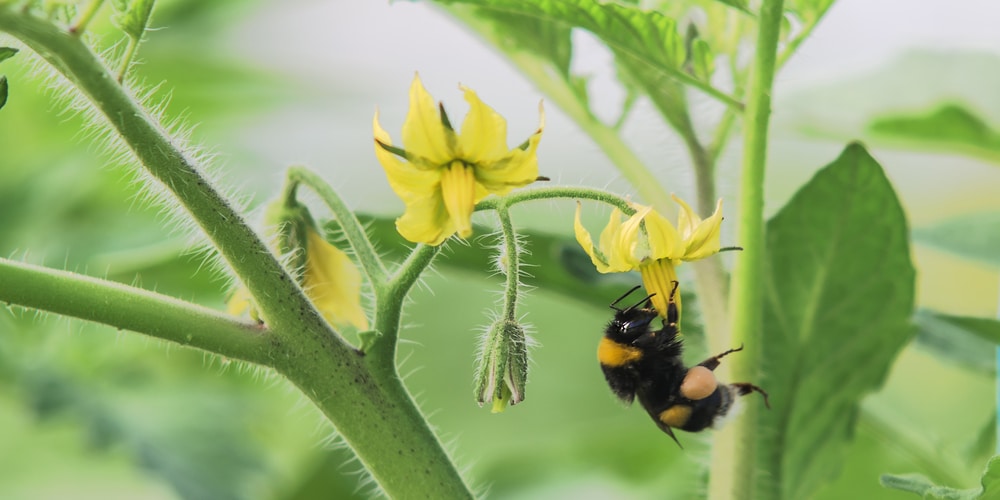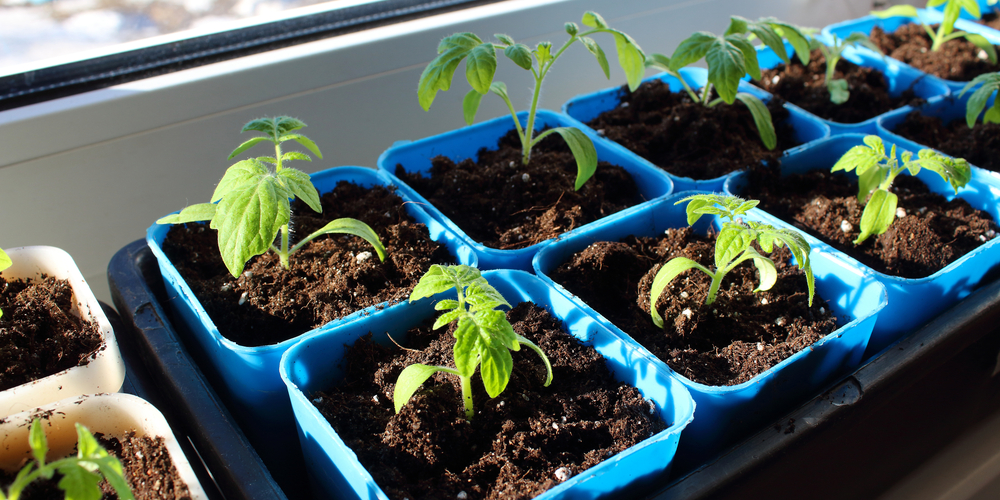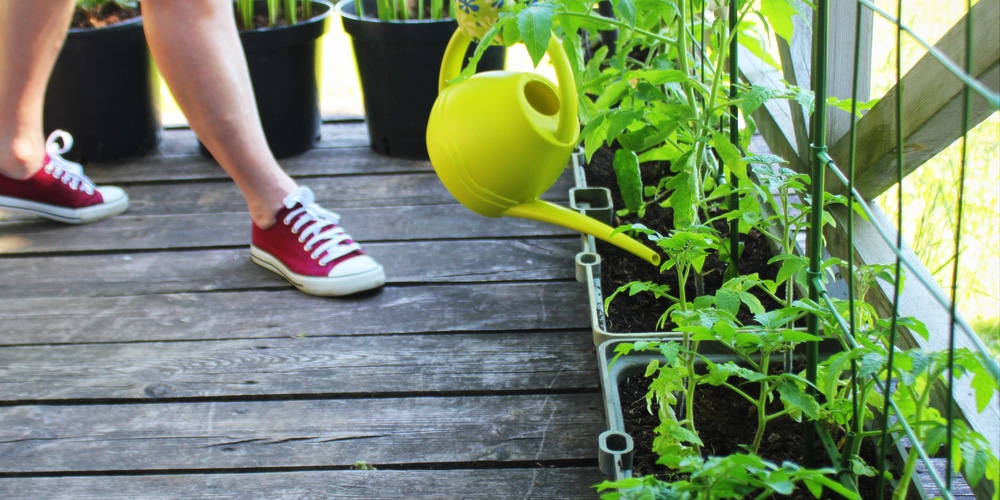When it comes to growing vegetables, there is one plant that seems to baffle gardeners – tomatoes. While it is no secret that growing tomatoes leaves many gardeners scratching their heads, one of the biggest secrets of growing healthy and productive tomatoes is knowing how and when to fertilize your seedlings.
Tomatoes are one of the most popular summer vegetables and for a good reason. They are relatively hardy and easy to grow. However, like many annuals, they are heavy feeders, and no matter how rich and fertile your soil is, they can quickly deplete its nutrients. That’s why gardeners need to stay on top of fertilizing their tomato plants.

Whether organic or chemical, fertilizers can add extra nutrients to your tomato garden, providing the seedlings with the nutrients they need to flourish. That said, tomato plants benefit from fertilizing at several key points of their lifecycle. Generally, tomato seedlings need to be fertilized when growing indoors, during transplanting, when flowers start developing, and when they start fruiting. Read on to find more on fertilizing tomato plants for quality produce.
Fertilizing tomato seedlings and how often

Tomatoes are heavy feeders, part of why they are such a challenging crop, and fertilizing plays a vital role in your tomatoes’ overall health and vitality. When it comes to fertilizing seedlings, it is a good idea to fertilize lightly from the get-go. The success of homegrown tomatoes immensely relies on fertilizer and the timing of application more than anything else.
For tomato seedlings in containers, fertilizing with a weak dose of organic fertilizer every week can help them get through the first growing successfully. TomatoTomato plants usually grow very quickly and need sufficient nutrients to grow well and healthy.
When it comes to transplanting and fertilizing tomato seedlings, tomato seedlings should be transplanted to a garden with loose, well-draining soil mixed with a lot of organic materials. The organic matter enhances drainage while adding essential nutrients to the soil. That said, even after mixing your gardening bed with organic materials, it is advisable to add a handful of organic tomato fertilizer to the planting hole during planting.
After transplanting, side-dress the seedlings by applying light organic tomato fertilizer every two weeks. Giving your tomato seedling a slow, steady diet during the first 4 to 8 weeks in the ground will help them develop a strong root structure to keep them stable and absorb the necessary nutrients.
Most importantly, when fertilizing your tomato seedlings, avoid using fast-release fertilizer and high-nitrogen fertilizers. Applying fertilizer with high nitrogen content will promote lush foliage and can delay flowering and fruiting.
What is the best tomato fertilizer?
Tomato seedlings are heavy feeders. They need the three primary nutrients – nitrogen, phosphorus, and potassium – and a host of other nutrients to grow best and produce well. Each nutrient is vital for the seedling’s overall health and good growth. Most importantly, they need:
Phosphorous: Phosphorous is vital for the growth and development of roots as well as fruits. During planting and as seedlings, tomatoes need plenty of phosphorus to establish themselves quickly.
Nitrogen: In plants, nitrogen encourages leaf growth. When fertilizing tomato seedlings, you need to stay away from high-nitrogen fertilizers as they can create a bushy tomato plant with little to no fruit.
Potassium: Potassium boosts tomato plants’ growth rate while helping them produce flowers that eventually develop into fruits. It is the most crucial nutrient for photosynthesis and the fight against tomato diseases.
Other nutrients that tomato seedlings need in small quantities include zinc, magnesium, calcium, and boron.
The best fertilizer for your tomato seedlings needs to have all the macronutrients needed by the plants. While this makes fertilizing tomato seedlings properly seem daunting, investing in fertilizers explicitly designed for tomatoes can help bypass the challenge.
If you already worked plenty of compost into the soil before planting, the most important nutrients your seedlings need are phosphorus and potassium, as there is already plenty of nitrogen from the compost. As such, the rule of thumb is to look for fertilizers with high phosphorus. Bone meal is a good source of phosphorus.
How Often To Fertilize Tomato Seedlings: Conclusion
Tomatoes are tender warm-weather crops. Although they are relatively hardy, they are heavy feeders and need to be fertilized from the get-go. Tomato seedlings grow surprisingly quickly, and fertilizing them can go a long way to ensuring they grow healthily and eventually produce. Hopefully, you will find this post helpful when growing your tomatoes.
Related Article: 5 10 10 Fertiliser
